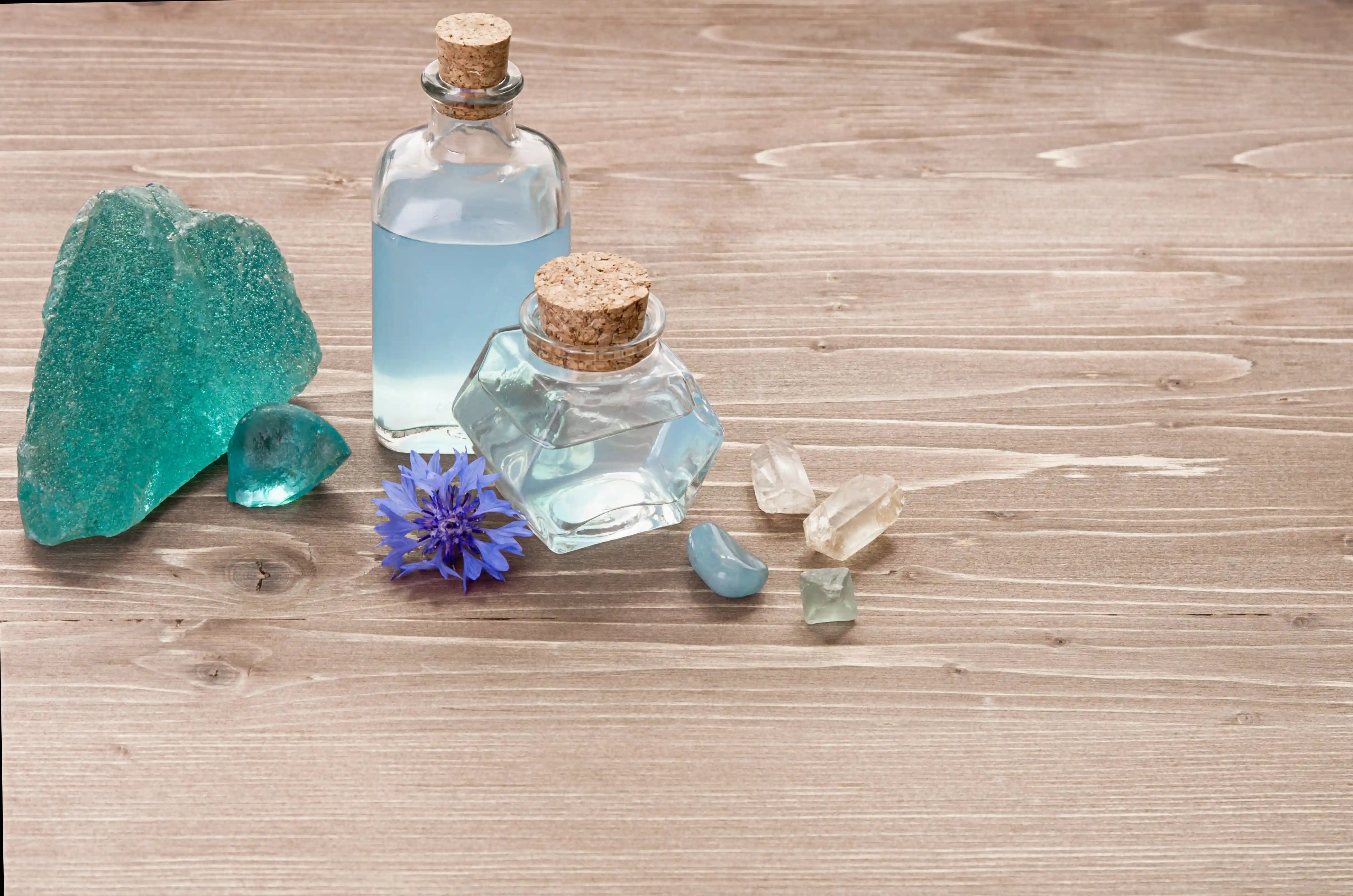What is a textile allergy?
A reaction of the immune system
Textile allergy is an inappropriate reaction by our immune system to substances present in clothing. Specifically, the body identifies certain molecules (dyes, finishes, etc.) as allergens and triggers an inflammatory response to defend itself. This most often takes the form of allergic contact dermatitis, i.e., eczema caused by repeated contact with a specific allergen. This allergy can occur in babies, children, or predisposed adults after a sensitization phase (the immune system “learns” to react to the substance in question).
When you have a textile allergy, your body releases inflammatory mediators into the skin, causing redness, itching, swelling, etc. This immune reaction should not be confused with simple mechanical irritation. In the case of a true allergy, even a minimal amount of allergen can trigger symptoms, which may spread beyond the area of direct contact. For example, a person who is allergic to the dye in a T-shirt may develop eczema not only under the T-shirt, but also on adjacent areas.
Difference between textile allergy and skin irritation
Allergy or irritation? Both cause redness, but the mechanism behind them differs. Skin irritation (irritant dermatitis) is caused by direct damage to the skin by a substance or physical factor: there is no immune response, and anyone would react if exposed sufficiently. For example, repeated rubbing against rough fabric or sweat trapped under synthetic clothing can cause redness and itching in anyone. The irritation appears quickly, right at the point of contact, and fades as soon as the cause is removed.
In contrast, textile allergies involve the immune system and only affect people who are sensitized. Symptoms are not immediate: they typically occur 12 to 48 hours after contact with the allergen and can persist for several days. In addition, an allergy can cause a more widespread rash, sometimes beyond the area of contact. It should be noted that a material can irritate without causing a true allergy: for example, wool can scratch the skin due to its abrasive nature, without the immune system being involved (this is referred to as irritation). In summary, if the reaction is very rapid and strictly localized to the point of friction, it is more likely to be irritation; if it is delayed, long-lasting, and recurs with each exposure to the same substance, it is probably a contact allergy.
What are the symptoms of a textile allergy?

Hives, red patches, and itching
An allergy to clothing often first manifests itself as intense itching and the appearance of red patches of varying sizes. Sometimes, hives appear, which are small, raised, pink or reddish bumps, often with a pale center, similar to nettle stings. These hives are very itchy and appear quite suddenly. They can appear within minutes to hours after putting on the offending clothing. Contact urticaria usually lasts for a short time and disappears without leaving any marks once the allergen has been removed.
In addition to hives, the skin may develop diffuse erythema (redness) on areas covered by the problematic fabric. Itching (pruritus) is a key sign: an allergy often triggers intense itching, which is difficult to relieve as long as the allergen is present. Some people also describe a tingling or slight burning sensation as soon as their skin comes into contact with the offending fabric. If the allergy is more severe, slight edema (swelling) may accompany the red patches. Fortunately, in most cases of textile reactions, there are no systemic (generalized) symptoms—the condition remains localized to the skin.
Contact eczema and delayed reactions
Another common symptom of textile allergy is allergic contact dermatitis. Unlike hives (an immediate reaction), dermatitis appears later, usually 24 to 48 hours after contact with the allergen. The skin becomes red, dry, and covered with small blisters filled with clear fluid. These blisters, characteristic of eczema, may ooze and then form scabs when scratched. Contact eczema is accompanied by intense itching and flaking (peeling skin) on the affected areas.
This type of allergy causes a persistent rash: as long as you remain in contact with the allergen, the eczema persists and may even spread. It is not uncommon for the lesions to last one to two weeks. For example, a child who is allergic to a dye in their polyester pajamas may develop eczema two days later all over their back and chest, where the pajamas touched their skin. The appearance of eczema helps to distinguish it from hives: “Unlike hives, eczema is characterized by the appearance of small blisters filled with water that ooze when scratched, leading to the formation of scabs,” explains the French Eczema Association. In summary, a flare-up of contact eczema will occur with a delay and will tend to persist and peel, while hives appear quickly and fade more rapidly.
Pimples, burning sensations, and the most affected areas
Allergic reactions to textiles can also manifest as small red pimples, either isolated or in clusters. These papules or pustules (if they contain purulent fluid in the event of secondary infection) sometimes resemble acne or a heat rash. They are particularly common in areas of friction or perspiration under clothing. Some allergy sufferers also describe a burning sensation on the skin: the area in contact with the allergenic fabric “heats up” and tingles, a sign of ongoing inflammation. This burning sensation is common in irritant contact dermatitis, but can also accompany a confirmed allergy when the reaction is intense.
Certain areas of the body are more commonly affected by textile allergies. These are generally areas where the fabric is in close contact with the skin and where we sweat more: the crook of the elbows, the back of the knees (popliteal folds), the armpits, the groin area, and the buttocks are typical locations. The neck can also be affected (e.g., allergy to dyes in a label or shirt collar), as can the waist (rash under the elastic of pants or a belt). Unsurprisingly, symptoms worsen when the area is subjected to constant rubbing by clothing or to a hot and humid environment that promotes sweating. This is why a rash caused by a textile will often be exacerbated in summer or during physical activity when wearing tight clothing. Finally, if the irritation is severe and prolonged, scratching can cause lesions (scratches, scabs) and, in rare cases, a bacterial or fungal infection can complicate the initial eczema.
What causes fabric allergies?
Chemicals and textile finishes

- Textile dyes: Many synthetic dyes can cause contact allergies. A well-known example is paraphenylenediamine (PPD), which is used in some dark dyes for fabrics or furs and is highly sensitizing. Disperse dyes (from the azo or anthraquinone family) formerly found in synthetic fabrics caused severe eczema—they are less commonly used today, but can still be found on old clothing or low-quality textiles.
- Formaldehyde resins: these resins are used to make textiles wrinkle-free or shrink-resistant. However, formaldehyde is a well-known contact allergen. Clothes treated with “no-iron” finishes often release formaldehyde residues that can trigger eczema in areas of friction (e.g., collars, cuffs).
- Various finishing products and additives: flame retardants used on upholstery fabrics or children's nightwear, mothproofing or anti-mold agents applied to clothing during transport and storage, glues and adhesives (to attach sequins, printed labels, or linings), etc. All these additives can remain on the fabric and migrate to the skin. For example, acetophenone azine—a recently identified molecule—has caused severe eczema in children via socks and shin guards treated with this chemical agent. As we can see, the chemical ingenuity of the textile industry unfortunately offers a wide range of potential allergens.
- Metals and other substances: Nickel, chromium, and cobalt salts used in certain dyes or found in metal rivets and buttons are a common cause of allergies (particularly nickel allergies). Latex may be present in the elastic bands of underwear or socks and cause reactions in people who are allergic to this substance. Even disinfectants or detergents used to wash clothes can leave irritating residues in the fibers (hence the importance of thorough rinsing).
In short, when we talk about “textile allergies,” in most cases it is a chemical added to the fabric that is responsible, rather than the raw fiber itself. A study by ANSES (2018) highlighted the presence of toxic compounds such as nonylphenols and their ethoxylates in new clothing, which can irritate the skin or cause sensitization. The good news is that by eliminating or avoiding these substances (for example, by systematically washing new clothes, see below), allergies can often be prevented.
Synthetic fibers: polyester, nylon, acrylic, etc.
We often point the finger at synthetic fibers as a cause of clothing allergies. In reality, any fiber (including natural ones) can cause contact dermatitis, but it's quite rare for the fiber itself to be allergenic. It's generally the products that impregnate it that cause problems. That said, synthetic clothing (polyester, polyamide/nylon, spandex, acrylic, etc.) is known to be poorly tolerated by sensitive skin. Why? First, because they come from petrochemicals and may contain chemical manufacturing residues. Second, they're less breathable: they promote sweating and maceration, which can trigger or worsen eczema and irritations. Finally, they often require disperse dyes which, as mentioned above, are among common allergens.
If your skin is very reactive, favoring clothing made from natural fibers is classic advice from dermatologists. Indeed, many testimonials mention itching or redness when wearing polyester or acrylic, which disappear when switching back to cotton. Synthetic materials are "not friends of the most sensitive skin," confirms one article: acrylic, polyester, nylon can contain molecules that trigger allergic reactions. Additionally, some synthetic elements integrated into clothing are frankly allergenic, like the latex contained in elastic bands (which can cause hives and even a generalized reaction in people allergic to natural latex).
Of course, not everyone becomes allergic by wearing synthetic materials. But if you have atopic or sensitive skin, these materials can be problematic. Especially since certain chemical processes give them antibacterial, anti-odor properties, etc., at the cost of adding potentially irritating substances.
Key takeaway: in case of sensitive skin or confirmed allergy, it's better to limit 100% synthetic clothing in direct contact with the skin. If you must wear them (for example, a polyester uniform), you can put on a thin cotton t-shirt underneath to create a protective barrier.
Natural fibers: cotton, wool — advantages and special cases

One might think that natural fibers are always harmless, but this is only partly true. Cotton is generally the best-tolerated material for skin with eczema or allergies: it's soft, lets the skin breathe, and if it's grown without pesticides and processed without too many chemicals (organic cotton), it contains almost no allergens. Cotton clothing (or silk, linen, hemp…) is therefore recommended for people suffering from skin allergies[6]. Organic cotton, in particular, guarantees the absence of pesticide residues and often fewer harmful dyes (and there's even undyed cotton or cotton dyed with less sensitizing natural pigments).
However, natural doesn't always mean hypoallergenic. Take wool: it's a natural fiber of animal origin, and yet it can cause reactions. Often, it's mechanical irritation due to the rough texture of certain wools: it scratches and reddens the skin without being a true allergy. But in some people, wool (especially untreated) can trigger a real allergy, particularly because of lanolin (the natural grease in wool) or chemical treatments applied to the wool. Result: eczema, intense itching as soon as they wear a pure wool sweater. Similarly, bamboo – often promoted for sensitive skin – can in rare cases irritate some people (it's actually bamboo viscose, a semi-synthetic fiber).
The case of leather and hides should also be mentioned: these are natural materials, but treated with tanning agents (often chromium-based) that are highly allergenic. An allergy to leather shoes isn't due to the leather itself, but to the tanning products.
In summary, quality natural fibers (cotton, silk, linen…), not coated with chemicals, remain the safest choice for allergic skin. However, listen to your skin: if even a soft wool sweater causes you eczema, you'll need to avoid it, natural as it may be. Conversely, some artificial materials like viscose or Lyocell (Tencel) are well tolerated because they're smooth and minimally treated – so don't be dogmatic, but favor what suits your sensitive skin.
How to know if you're allergic to a fabric?
Signs to watch for daily
Determining if a textile is responsible for your skin problems isn't always easy. However, some warning signs in daily life can put you on the track:
- Your itching coincides with wearing a particular garment. For example, you notice your child scratches their arms raw every time they wear their red acrylic sweater, and not with other sweaters. Or you yourself have red legs after wearing those new synthetic pants all day.
- The rash corresponds to the garment's contact areas. A strong clue is a rash that follows the shape of the textile. For example, a V-shaped erythema on the upper back might suggest an allergy to the bra's latex, eczema in a band around the waist points to the culprit being the pants' elastic, etc. Similarly, an allergy to sock dye could manifest as red ankles in a stripe pattern where the sock is tight.
- Symptoms disappear when removing the allergen. If your redness clearly subsides during periods when you don't wear the suspect garment (for example, complete disappearance of eczema during vacation when you don't wear the incriminated uniform), it's very suggestive. Clear improvement upon avoidance is an important criterion.
- Reaction from the first use of a new garment. Many people don't tolerate new clothes fresh from the store well (because of chemical finishes). But if from the very first time you wear a garment, you have a strong allergic reaction and it happens again with each attempt, be wary: "if the allergy is due to the garment itself, you'll need to do without it," advises a specialist. In short, no point insisting: this garment contains something your skin rejects.
- No other explanatory factor. Sometimes, it's not the textile: similar symptoms can be caused by detergent, by pre-existing atopic dermatitis, by excessive heat, etc. But if you've eliminated other possible causes (e.g., by changing detergent without improvement), the hypothesis of clothing allergy strengthens.
In practice, keep a journal of eczema or hives episodes, noting what you were wearing those days. You can do empirical "tests": wear the suspect garment for 2 days, then not wear it for 2 days, and compare your skin's condition. Caution: do this carefully if your reactions are severe. For babies, it's harder to pinpoint: observe if certain body or pajama materials worsen their eczema, or if conversely their skin does better with certain fabrics (generally unbleached natural cotton is the most neutral).
Allergy tests and medical diagnosis
If you suspect a textile allergy, consulting a dermatologist or allergist is the best approach to be certain. The specialist can perform allergy tests, particularly patch tests (epicutaneous tests). This involves applying small chambers containing standard allergens to the skin (often on the back) for 48 hours, then seeing if a skin reaction appears. There are specific test batteries for clothing allergens: for example, testing common textile dyes (disperse blue, disperse yellow…), formaldehyde, rubber, glues, metals like nickel or chromium, etc. In some cases, extracts from your own clothing can even be tested. If a patch test reproduces the eczema where the suspected allergen was placed, the diagnosis of contact allergy is confirmed.
These tests allow precise identification of the skin allergy's cause, which is very useful for avoiding it in the future. For example, if the para-phenylenediamine dye test is positive, you'll know you need to avoid black synthetic clothing (and also hair dyes containing PPD). Same for a positive nickel test: you'll watch out for metal buttons, zippers, etc., and can opt for plastic or cover the inner side of buttons.
The medical diagnosis also helps distinguish a textile allergy from other dermatological problems. Localized eczema can have other causes (scabies, fungal infection, atopic eczema…). If in doubt, the dermatologist will rule out these possibilities. Sometimes, if an immediate-type allergy is suspected (rare for textiles, except latex), blood tests (specific IgE measurement) or prick tests can be done, particularly for latex or cases of immediate contact urticaria.
In summary, if your symptoms are recurrent and you can't clearly identify the culprit, allergy tests will provide an objective answer. It's an investment of a few appointments, but worth it to then manage your wardrobe knowingly and avoid reliving these reactions.
How to calm a skin allergic reaction related to clothing?
First steps in case of a crisis
Does a rash occur despite your precautions? Don't panic, there are simple gestures to provide quick relief:
- Remove the offending garment immediately. This is the first thing to do: remove the suspect garment or anything in contact with the affected area. As long as the allergen remains on the skin, the reaction continues. By removing the textile, you stop the exposure and often symptoms stop worsening.
- Rinse the skin with cool water. Gently run the area under lukewarm or cool water (not hot, to avoid aggravating inflammation). You can also apply a cold damp compress to the lesions for a few minutes to soothe itching. Cold calms inflammation and provides temporary relief.
- Avoid scratching. Easier said than done when it itches! Yet, scratching can worsen the rash and cause lesions or infection. Cut your nails short during a crisis, and possibly wear cotton gloves at night to avoid unconsciously scratching your skin. Distracting a child so they don't scratch (games, cartoons…) can help during peak itching.
- Apply a soothing local treatment. As soon as possible, apply a calming cream to red areas. You can use a hypoallergenic emollient cream or a natural product like pure aloe vera gel. If the lesions are not extensive, a hydrocortisone cream at 0.5 or 1% (available over-the-counter for lower doses) can be applied to reduce inflammation and itching. Ask your pharmacist for advice, especially for a young child, before using even a low-dose corticosteroid cream.
- Take an oral antihistamine if necessary. In case of hives or very intense itching, an antihistamine can provide quick relief. These medications (available at the pharmacy, sometimes over-the-counter) block histamine release and reduce rash, itching, and swelling. They can be useful at night to sleep better if scratching prevents rest. However, be aware of drowsiness some antihistamines can cause, and always check the appropriate dosage for age.
In most cases, these measures are sufficient and symptoms disappear within a few hours to a few days once contact is broken. Take the opportunity to wash the incriminated garment thoroughly (even several times) to eliminate as much of the allergenic substance as possible if you plan to wear it again later. And of course, monitor progress: gradual improvement should be felt. If on the contrary the rash spreads or gets infected, you'll need to consult.
Care for sensitive skin
After the acute phase, or ideally as prevention for sensitive skin, it's important to care for your skin daily with appropriate products. Well-hydrated and strengthened skin will be less reactive to external aggressions. Here are some guidelines for a special sensitive skin routine:
- Daily hydration with an appropriate cream. Applying an emollient cream daily to the whole body (or at least sensitive areas) helps restore the skin barrier. For example, Doucéa's APAISÉA cream, rich in natural ingredients, is designed to hydrate, soothe, and protect children's sensitive skin daily. Thanks to its light texture, it penetrates quickly without leaving skin greasy, allowing morning and evening use. It contains active ingredients like inulin and prebiotics that balance skin flora and strengthen the skin's natural defenses, as well as vegetable oils (sweet almond, sunflower, jojoba) to nourish and repair the weakened skin barrier. By keeping skin supple and hydrated this way, you reduce the risk of an allergenic substance penetrating and triggering a reaction.
- Specific care for very dry or atopic skin. If your child has atopic or extremely dry skin, a richer, more restorative cream is needed. Doucéa's DOUTOPIA cream, for example, offers intense nutrition and calms irritations thanks to targeted ingredients: madecassoside (Centella Asiatica extract) which is a powerful anti-inflammatory soothing agent helping reduce redness and itching, a complex of hydrating sugars that maintains water in the epidermis for lasting hydration, and of course natural oils and vitamin E to repair the lipid barrier and protect the skin. Fragrance-free and hypoallergenic, this type of care can be used from the first months of life on very dry areas or those prone to eczema. Applied during flare-ups or as daily maintenance, it helps space out irritation episodes by keeping skin more resistant.
- Gentle and short cleansing. Bath time can aggress the skin if you're not careful: use soap-free cleansers with neutral pH, or micellar water to cleanse without drying. For example, Doucéa's Micellar Water allows cleaning face and body without rinsing, avoiding contact with hard water and aggressive soaps. Enriched with natural prebiotics and probiotics, as well as chamomile and cornflower floral waters, it cleanses while soothing irritations. This type of no-rinse care is very practical for cleaning a child after play or lunch, without causing redness. Limit baths that are too hot and too long (hot water and prolonged soaking remove the skin's protective film). Prefer a quick lukewarm shower.
- Dry well and protect. After bathing, dry skin by gently patting with the towel (don't rub vigorously). Then immediately apply moisturizing cream while skin is still slightly damp, to trap hydration. This is basic advice in atopic dermatitis that's also valid for allergy prevention: post-bath emollient strengthens the skin barrier and reduces allergen penetration.
By establishing these daily gestures, you create a virtuous circle: your child's skin (or yours) will be less vulnerable, and if an allergic reaction occurs, it will be milder and heal faster. Don't hesitate to also involve the child in their routine – for example by making cream application fun (see our Doucéa playful cases later). An appropriate care routine is one of the best defenses against skin allergies!
When to consult a doctor or dermatologist?
In some cases, it's preferable to call on a health professional:
- If the allergic reaction is severe or widespread. For example, eczema covering a large part of baby's body, significant swelling (angioedema) associated with hives, or very oozing and painful lesions. Similarly, if the child scratches until bleeding, a consultation is necessary.
- If symptoms persist or worsen despite basic care. Normally, removing the allergen and applying local treatment should improve the situation in 1 to 3 days. If beyond that the skin remains in crisis, or the eczema continues to spread, medical advice is needed. A poorly soothed allergy may require stronger treatments (stronger corticosteroids, antibiotics in case of infection…).
- If you're not sure of the rash's cause. Sometimes we wrongly think it's a textile allergy when it's another condition (scabies, cholinergic urticaria, psoriasis…). The doctor can examine and correct the diagnosis. Conversely, they can confirm the allergy and refer you to an allergist for tests if needed.
- If signs of infection appear. Scratched allergic skin is an entry point for germs. If patches become warm, very red, painful, with pus, fever, here again you need to consult quickly.
The general practitioner or dermatologist can prescribe appropriate treatments: stronger corticosteroid-based creams to calm inflammation, oral antihistamines to control itching, and even short oral corticosteroid therapy in cases of very severe acute allergy. These prescription treatments can control the crisis and avoid complications. Additionally, the doctor will help you implement preventive measures (allergen avoidance, skin care advice).
Finally, if the textile allergy significantly disrupts daily life (chronic eczema, major discomfort), long-term follow-up can be beneficial. For example, a child with atopic eczema worsened by clothing could benefit from regular assessments, personalized advice, or even spa treatments.
In summary: don't hesitate to consult if the situation overwhelms you or endangers your child's well-being. Better a "unnecessary" visit that reassures you, than missing a superinfection or suffering needlessly. Doctors are familiar with these increasingly common skin allergies and will help you through the crisis and then avoid it later.
How to prevent textile allergies?
Choosing the right fabrics for sensitive skin

Prevention starts with choosing appropriate clothing. If you or your child have sensitive skin or a tendency toward eczema, opt for soft and breathable materials. Cotton is often recommended: it's a non-irritating natural fiber, especially if it's good quality and not treated with aggressive chemicals. Choose 100% cotton (rather than cotton/polyester blends), and if possible organic cotton to minimize the presence of unwanted residues. Cotton allows air to circulate, avoiding sweat accumulation against the skin, which reduces irritation risks.
Other natural materials may work depending on the case: silk, for example, is very well tolerated and used in certain special underwear for atopic skin (it regulates temperature and maintains skin hydration). Linen is also an interesting natural plant fiber, especially in summer because it's light and non-allergenic. However, beware of its somewhat rough texture; choose soft linen or blended with cotton for babies. Hemp or textiles made from bamboo fiber (bamboo viscose) are other options, but make sure they don't contain chemical additives.
What about wool? As seen previously, for some it causes problems. If you suspect sensitivity to wool, avoid it in direct contact with skin. You can for example wear a cotton camisole under a wool sweater so only the cotton layer touches skin. Prefer so-called hypoallergenic wools (very fine Merino wool, cashmere) which are less irritating because softer and differently treated – but this varies for each person.
Generally, avoid synthetic materials in contact with sensitive areas. Synthetic fibers like polyester, nylon, spandex, etc., tend to accentuate reactive skin problems. If you want to wear a trendy synthetic garment, wear cotton underwear underneath. Also avoid blended fabrics containing spandex if you're allergic to latex (as spandex may contain it). Finally, watch out for thick seams or labels: for an eczema-prone child, prefer clothing with flat seams or turned outward, and remove scratchy labels.
In summary: "opt rather for clothing made from natural and preferably organic fibers" if your skin is very reactive. Clothing comfort is essential for serene skin. Nothing like good 100% cotton soft pajamas to avoid nighttime awakenings crying due to itching!
Wash new clothes before wearing them
This is an essential reflex to prevent allergies: any new garment that will be in contact with skin must be washed before first use. Why? Because clothes coming from the factory are impregnated with various chemicals (excess dyes, wrinkle-resistant finishes, preservatives for transport…). These residues remain on the fabric and can migrate to your skin. A first wash allows eliminating the surface layer of chemical agents and greatly reducing allergy risks. ANSES (French health safety agency) emphasizes the importance of this preventive washing, which is "recommended by the majority of dermatologists."
Concretely, wash baby's new clothes separately, preferably with a gentle, fragrance-free detergent. Follow temperature recommendations to avoid damaging the textile, but don't hesitate to do a double rinse. This will eliminate not only manufacturing products (PPD, an allergenic dye, has been found in some new clothes), but also detergent residues that can themselves irritate infants' delicate skin.
Tip: you can add a little white vinegar to the rinse water, it helps neutralize certain alkaline residues and set colors (thus reducing dye bleeding onto skin later). On the other hand, avoid adding chemical fabric softener for allergic people's clothes, as these products leave a scented film that can also cause reactions.
This advice to wash before use also applies to sheets, towels, and any textile in prolonged contact with skin. And even apart from any allergy risk, it's more hygienic: you don't know what hands or surfaces the garment passed through before arriving at your home! So systematically wash new items, it's a simple gesture with certain benefits.
Favor transparent and skin-respectful brands
Not all clothes are equal. To minimize allergy risks, it's worth turning to trusted brands that clearly communicate about their products' composition and adopt healthier processes. Before buying, don't hesitate to research the brand's philosophy: does it use organic materials? Are its dyes certified free of harmful substances? Does the brand commit to not using controversial anti-fungal or stain-resistant treatments? This kind of information can often be found on the brand's website or by contacting their customer service.
A good indicator is also price and origin. Very cheap clothes, mass-produced, are more likely to have been carelessly treated (azo dyes banned in Europe but sometimes used elsewhere, etc.). Without becoming paranoid, remember that "very low prices often rhyme with poor quality" and potentially less sanitary control. Better to have fewer pieces in your wardrobe, but of superior quality and safe for skin, especially for a child. Favor quality over quantity, and seek transparency: companies that detail their production methods are a good sign.
When shopping in-store, read labels: avoid those with mentions like "wrinkle-resistant," "wrinkle-free," "stain-resistant" which often correspond to chemical treatments added to the textile, which can irritate sensitive skin. Similarly, beware of clothes that give off a strong chemical odor or bleed color when rubbed just by touching them – a sign of excess unfixed dye.
Fortunately, more and more ethical brands offer lines of special sensitive skin clothing or at least with an ecological approach reducing the use of allergenic substances. For example, some baby brands commit to using only organic cotton, plant-based dyes, and proudly indicate "no formaldehyde resin, no heavy metals" etc. Opting for these transparent and respectful brands is good for your skin (and the environment). If needed, don't hesitate to contact the brand to ask specific questions – a serious brand will be happy to reassure you.
In summary: choosing your clothes and care routine well to avoid textile allergy
In conclusion, preventing textile allergy rests on two pillars: wise clothing choices and a good skin care routine. On the clothing side, favor as much as possible natural and soft materials (cotton first), systematically wash new clothes to eliminate residual chemicals, and opt for trusted brands that ban harmful treatments. Avoid what irritates you (each skin having its tolerances): if a fabric or type of clothing bothers you, listen to your body and find an alternative.
On the skin side, pamper it daily: hydrate, protect, soothe. Well-hydrated skin is less permeable to allergens. Adopt safe products adapted to sensitive skin, like those from the Doucéa range that combine naturalness and effectiveness to strengthen infants' skin barrier. Don't hesitate to make this routine fun for your child – with playful cases or an evening ritual – so they enjoy caring for their skin.
By proceeding this way, you put all chances on your side to avoid textile allergy or greatly reduce its effects. And if despite everything redness or itching appears one day, you'll know how to react quickly (remove the suspect garment, calm the skin) and consult if needed. Keep in mind that each child is unique: some will tolerate everything without flinching, others will need a more streamlined wardrobe and increased vigilance. But with our advice, you're now armed so that clothing remains a pleasure and not a source of trouble.
In a word, the key word is anticipation: choose well in advance (clothing, care products) to not suffer later. Thus, your little one can dress, play, dream, and explore in complete comfort, with healthy skin and a smile on their face – and you'll have peace of mind!
















